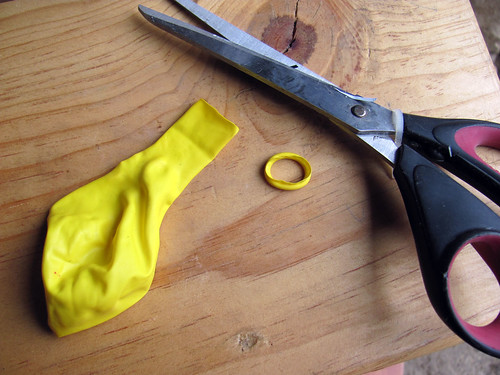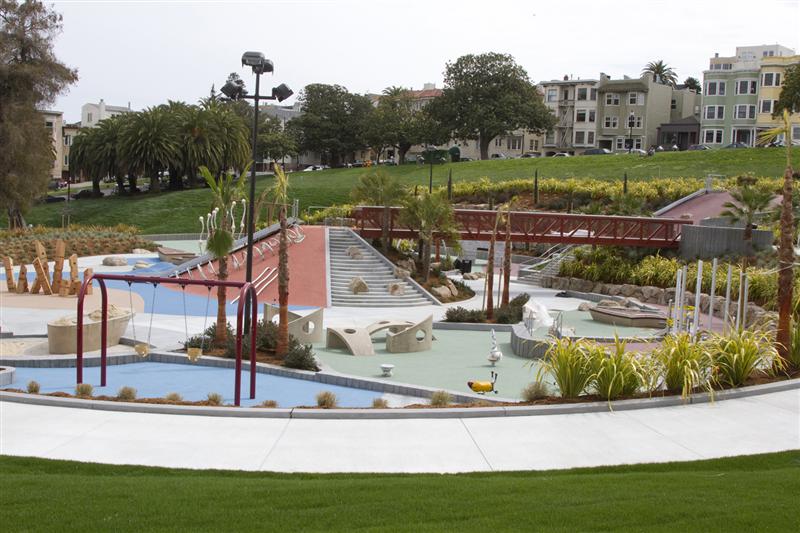Looking for something to do in San Francisco with a child who has some social differences? We have some ideas for you!
(1) House of Air
Located in the luscious green fields of the Presidio, the House of Air is a big ole' airplane hangar filled with trampolines. The under-7's have a bounce house to contend with because they aren't old enough to handle the big trampolines yet, but nevertheless, the House of Air will absolutely wear your kids out.
PROS:
- Many kids with Autism have a hard time sleeping - the extra exertion of energy can help.
- Some kids on the spectrum may be reluctant to play sport, and be uncomfortable with physical activity. Trampolining provides healthy movement, yet gives personal space.
- Sensory-seekers can indulge their wild side with relatively no real danger.
CONS:
- Can be loud, if you have a sensory avoidant child, pack some ear plugs.
- Can be busy, choose an off-peak time and you may just get the place to yourself!
(2) Randall Museum
PROS:
- Free! Not many places in SF can boast free admission for kids these days. And there's a free parking lot.
- Great for a rainy day "Plan B".
- Kids can go to the museum repeatedly and yet still find things to do.
- Indulges many typical special interests for kids on the spectrum - history, earthquakes and a train room!
- Live animals/petting zoo, teaching kids to care about living beings and helping some kids who may have fear of animals.
- Fields outside for kids to take breaks from indoors, as well as hiking opportunities next door. There's a beautiful vista of SF to be seen - good for the whole family's sanity.
CONS:
- It's quite a small museum, especially if you have loud kids! You might want to try going when less kids are around, or take your children outside for a break every 20 min or so.
(3) California Academy of Sciences
So much to see, do and learn!
PROS:
- Very educationally diverse.
- Live animals.
- Rooftop garden.
- Rainforest.
CONS:
- Can be very overstimulating! Be warned! Your kids may need breaks in quiet places, or some noise-canceling headphones to soften to stimulation onslaught.
- The aquarium is gorgeous but very dark, and there are a lot of tunnels/places to hide. Keep a close eye on your kids because in the blink of an eye they may dart off in different directions. Nobody likes losing their kids in a dark, crowded room!
(5) Dolores Park
Updated and fresh, the new Dolores Park playground is a great space for your kids to have fun in the Mission.
PROS:
- Very new, and therefore pretty safe.
- Multisensory approach, there are noisemakers and different textures around the place.
- Made for a high volume of kids, so even when it's crowded there are things for your kids to do.
CONS:
- It's BIG, and therefore easy to lose track of where your kids are. You may want to dress your child in a bright color or loud pattern that's easily recognizable.
- The playground isn't totally fenced, and there is a bridge which can lead them out of the playground.
- There are a lot of adults milling around, especially on weekends, try to keep an eye on people who seem like they aren't accompanying a child.
(6) Hiller Aviation Museum
Granted, this one isn't in SF (It's in San Carlos) - but if you have a child who loves planes, you HAVE to go to the Hiller!
PROS:
- Very welcoming environment for kids with special interests in planes, and social differences in general.
- Loads of history and information on aviation.
- Summer Camps available!
- Real plane for the kids to explore, play pretend and sit in the cockpit.
CONS:
- Can be super boring for kids with no interest in planes.












